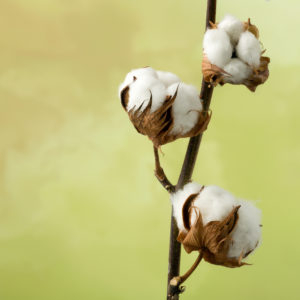The United States Department of Agriculture has just awarded cotton producers “one-time only” payments that cover “cotton ginning costs” based on their 2015 production. Anyone with experience in policy history, an attribute most farmers possess, knows that temporary subsidies have a strong tendency to become permanent in one form or another. It is therefore valuable to consider the background and implications of this new program. The new cotton ginning cost subsidies grew out of cotton industry dissatisfaction with the subsidies to which they have had access for the last couple of years compared to cotton policy history.
Before the price spikes of about a decade ago, for about 70 years cotton farms had traditionally relied on government payments for half or more of their annual revenues. As a part of the settlement of a WTO dispute, the 2014 Farm Bill offered cotton farmers a new, heavily subsidized county-based revenue insurance program (named STAX) to replace long-standing price-based subsidies. But despite an 80% subsidy on the insurance premiums, most cotton farms (accounting for about 70% of aggregate cotton acreage) have chosen not to sign up for STAX. Simply put, despite the heavy subsidy, STAX has failed to satisfy the subsidy habits of the cotton industry.
Most cotton farms and acreage continue to participate in the heavily subsidized farm-by-farm crop insurance program, but despite premium subsidy costs of $450 million per year, an average of $54 per acre, that subsidy has also been insufficient to relieve political pressure from cotton producers for transfer of federal funds. Earlier this year, the USDA rejected industry calls for payments based on cotton seed production and that too stimulated further industry demands that the government find some way to increase subsidies.
As with many US farm commodities, cotton prices have been lower than in the recent past. Prior to 2008, government payments would have made up much of the difference in cotton revenue while indemnities from subsidized revenue insurance would have aided those farms with larger revenue declines that were linked to poor yields on their own farms. Farmers, and their bankers, had confidence that, thanks to American taxpayers, cotton revenue shortfalls would be modest. Under the current programs, cotton farms receive only some of the government payments that they had come to expect in previous decades.
USDA finally acquiesced to repeated requests from the cotton industry. The new subsidy will transfer about $300 million or roughly $43 per acre, to cotton farms. If the program turns out to be, and was really expected to be, a one-time windfall benefit, the consequences of the new subsidy would be limited to a transfer from the American taxpayers to farms owned and operated by a relatively small group of wealthy individuals and families. That is business as usual in Washington. But, where this program has potential to do more economic damage is precisely the precedent it sets for further subsidies and the incentives created by those expectations.
So how does the new subsidy fit into the cotton subsidy fabric? Subsidized individual crop insurance continues to be popular and STAX may yet be popular in years when farmers anticipate indemnities. But, now, when revenues decline, farmers, their bankers, and other firms involved with cotton input supplies or cotton marketing, can anticipate that Congress or the USDA will find some rationale for a creative way to top up the revenue of this politically connected and astute industry. (The current and several previous chairs of the House Agricultural Committee represent districts where cotton is, or has been, king.) Despite its WTO pledge to reduce cotton subsidies that create production and trade distortions, apparently the US government cannot resist, perhaps especially in election years, the desire to provide income supplements.
The implications are clear. Even though the new cotton subsidy payments made in any year may be based on prior year production, the payments are being built into industry revenue expectations, which keeps cotton production higher than it would otherwise be. And, as usual, such production responses imply lower cotton prices and related distortions created by choosing crops in response to government subsidies rather than market signals.

